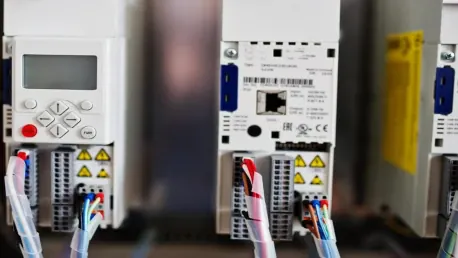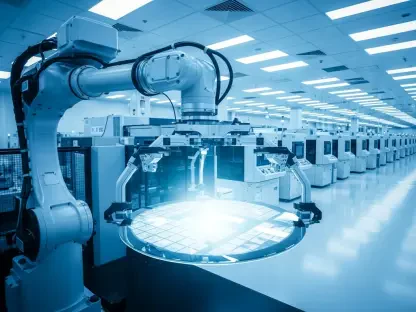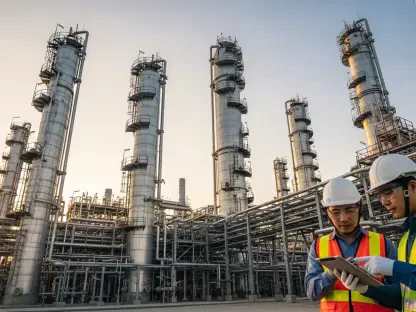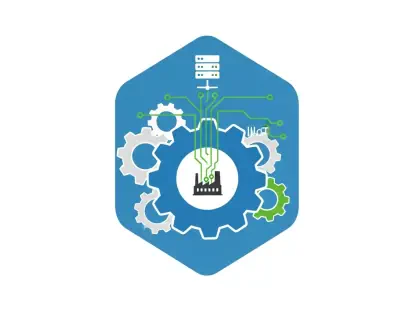The industrial control transformer market is poised for significant growth over the next decade, buoyed by advancements in technology and increasing demand for automation in various industrial applications. As industries continue to evolve to meet the demands of modern production capabilities, the need for reliable and efficient control transformers becomes increasingly apparent. This article delves into multiple factors contributing to this market’s projected growth, including market statistics, ongoing trends, key drivers, challenges, and insights into different industry segments and regions. Understanding these dynamics provides a clearer picture of the market’s future landscape and how it will evolve by 2032.
Market Overview and Growth Projections
The industrial control transformer market is set to experience robust growth, with revenue expected to rise from USD 1,033.57 million in 2024 to USD 1,499.17 million by 2032, at a CAGR of 4.88%. This growth trajectory is largely propelled by the escalating need for advanced control systems and automation designed to enhance safety measures, improve energy efficiency, and support a plethora of industrial applications. The continuously increasing emphasis on energy efficiency, the advanced design of control systems, and the steady integration of digital technologies further accentuate this expansion.
In addition to these technological advancements, the growing adoption of renewable energy and the persistent demand for safety and reliability play crucial roles in driving the market. Industrial levels of automation are also witnessing a significant upward trend, with new infrastructure development acting as a pivotal contributor to the broader market’s growth trajectory. As industries move towards optimizing their operations, the need for control transformers to ensure stable and dependable control power becomes increasingly indispensable.
Industry 4.0 and Smart Manufacturing
A dominant trend seen in the industrial control transformer market is the integration of Industry 4.0 and smart manufacturing practices. This trend is characterized by interconnected systems within intelligent factories, where machinery and control systems are highly interlinked. Control transformers are vital in providing stable and reliable power to these networks, thereby ensuring both performance and energy efficiency. The concept of Industry 4.0 encompasses a wide array of features such as increased automation, enhanced energy efficiency, real-time data collection and analysis, advanced cybersecurity measures, smart manufacturing systems, and predictive maintenance.
These features collectively elevate the demand for control transformers as they are crucial in maintaining stable voltage. Additionally, they provide the steady and clean power necessary for the precise functioning of an array of sensors, controllers, and actuators integral to automation. This transformation towards smart manufacturing is not a mere phase but a growing necessity, driving industries to adopt cutting-edge control transformer solutions to remain competitive and efficient in an increasingly automated landscape.
Expansion of Process Industries
The expansion of process industries such as oil and gas, chemicals, pharmaceuticals, food and beverage, paper and pulp, and water treatment is another significant market driver. These industries prioritize continuous operations and therefore require an uninterrupted and reliable power supply. Control transformers maintain stable voltage for consistent operations and provide the clean, steady power required for the precise functioning of sensors, controllers, and actuators regulating critical parameters like temperature, pressure, and flow rates.
Particularly notable is the oil and gas industry’s expected highest CAGR of 7.91% from 2024 to 2032. This growth is driven by increasing automation levels in processes like extraction, refining, and distribution. Moreover, the expansion of offshore drilling and exploration activities, updates to existing infrastructure, and heightened emphasis on safety and precision control in hazardous conditions contribute significantly to this uptrend. As these industries expand and evolve, the demand for advanced control transformers that ensure operational consistency and safety continues to surge.
Challenges in the Market
Despite the positive growth outlook, the industrial control transformer market faces several notable challenges. One of the primary issues is the fluctuating prices of raw materials and components used in manufacturing these transformers. These fluctuations are influenced by a spectrum of global economic factors, supply-demand dynamics, and geopolitical tensions, which directly impact manufacturing costs, pricing, and overall profitability. Copper for windings, steel for cores, and various insulation materials such as paper and resins are among the primary raw materials, and their price volatility poses a substantial challenge for manufacturers.
Managing these cost fluctuations while maintaining profitability and competitive pricing remains a significant challenge for manufacturers in this market. Additionally, the supply chain disruptions caused by global events and the ongoing environmental concerns linked to mining and refining raw materials add layers of complexity to the situation. Developing strategies to mitigate these challenges is crucial in sustaining market growth and ensuring stability in the industrial control transformer sector.
Segmentation by Phases and Power Ratings
The industrial control transformer market is segmented based on phases: three-phase and single-phase. In 2024, the three-phase category took the lead, accounting for roughly 65% of the revenue and is expected to witness a 7.49% CAGR from 2025 to 2032. The dominance of three-phase transformers stems from their widespread application in heavy industries and large manufacturing facilities, which necessitate higher power capacity for numerous industrial applications and witness increasing demand in rapidly industrializing nations. Furthermore, advancements in three-phase transformer technology continue to enhance their performance and efficiency, making them an essential component in various industrial applications.
The market is also segmented by power ratings, where the 501-1,000 VA category contributed around 40% of the revenue in 2024. Transformers within this range are known for their versatility and suitability for various industrial applications, including automation, process control, and medium-sized machinery. They offer load balancing and cost-effectiveness, which is crucial for various industrial operations. Conversely, the category above 1,501 VA is anticipated to exhibit the highest CAGR of 8.53% from 2024 to 2032, driven by the increasing demand for higher power capacities in modern industrial applications. Industries like oil and gas, metallurgy, and chemicals particularly require these higher-rated transformers for their large-scale and energy-intensive processes.
Geographical Outlook
The industrial control transformer market is set for considerable growth in the coming decade. This surge is driven by technological advancements and an increasing demand for automation across various industrial sectors. With industries constantly evolving to enhance production capabilities, the requirement for dependable and efficient control transformers becomes ever more critical. This article explores several elements contributing to the anticipated market expansion, such as market statistics, current trends, primary drivers, challenges, and insights into various industry segments and regions. By understanding these factors, we gain a clearer perspective of the market’s future and its development trajectory leading up to 2032.
Technological innovations are drastically transforming the landscape of industrial control transformers, pushing the boundaries of what’s possible in automation and efficiency. The demand for smart manufacturing processes, energy-efficient solutions, and robust equipment in sectors like automotive, aerospace, and manufacturing is increasing. These industries are placing a premium on equipment that can deliver high reliability and performance under demanding conditions.
Additionally, regions like North America and Asia-Pacific are experiencing significant industrialization and urbanization, which further fuels market growth. However, the industry is not without its challenges, including regulatory hurdles and the high costs of advanced transformers. Despite these obstacles, the combined influence of innovation and escalating industrial demand sets the stage for a dynamic and rapidly evolving market through to 2032. Understanding these dynamics equips industry stakeholders with the insights needed to navigate and thrive in the future landscape.









